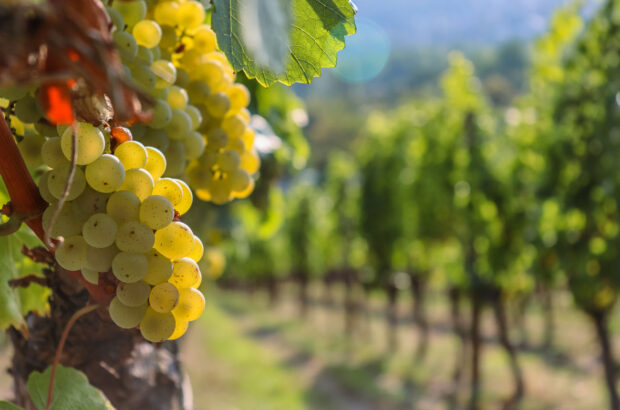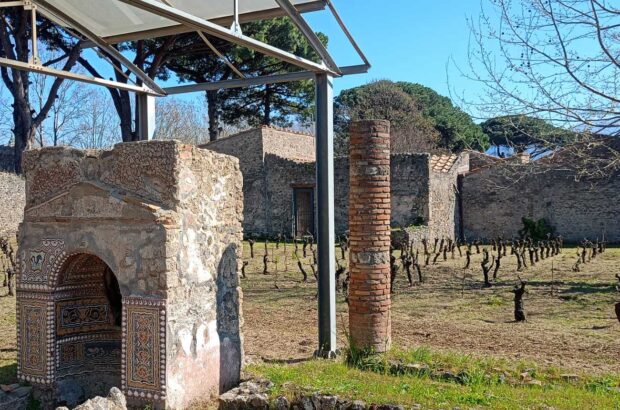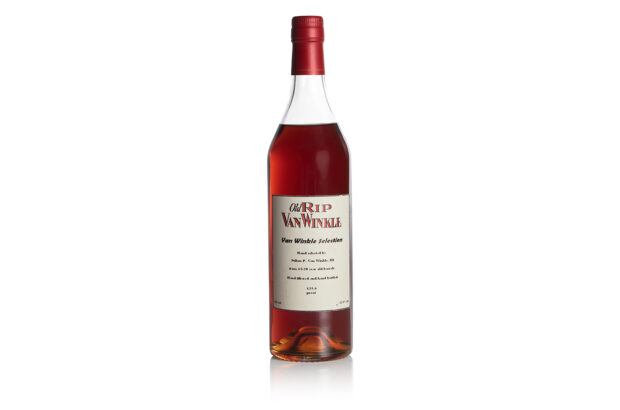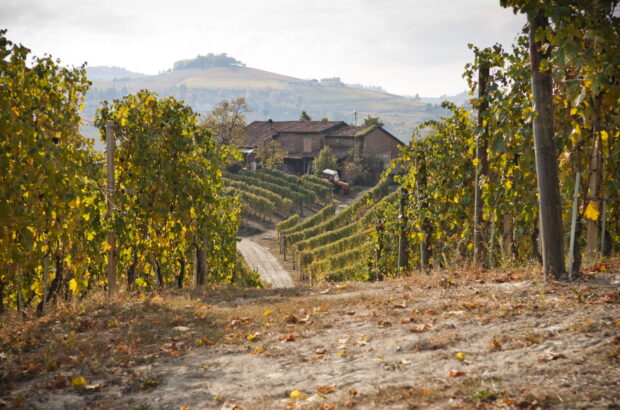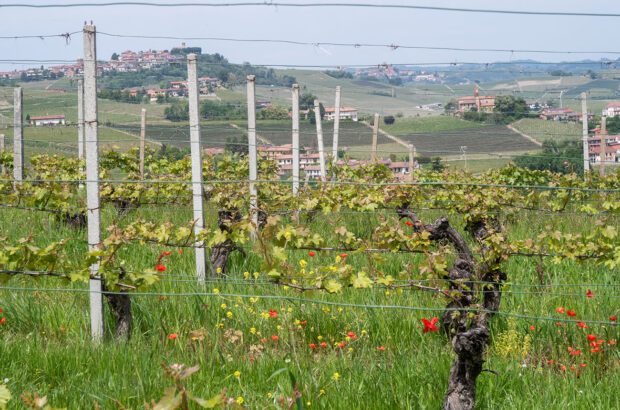The city of Jerez de la Frontera is at the heart of the Jerez-Xérès-Sherry DO that shares its name. This is one the oldest wine-producing regions in Spain, thought to have been established by the Phoenicians more than 3,000 years ago.
The old part of the city is built around the medieval Moorish fortress of the Alcázar and the 17th-century Christian cathedral. But the region’s distinctive architecture owes much to another kind of cathedral: the old bodegas or ‘Sherry cathedrals’, typically built during the zenith of the Sherry industry in the 19th century.
Jerez is also famous for its Feria del Caballo (which took place on 4-11 May this year), a traditional spring fair that reflects the city’s twin obsessions: wine and horses. Flamenco is also part of the local culture – there is an annual festival fortnight in February-March and it also features heavily in the Tío Pepe cultural summer festival.
The Fiestas de la Vendimia, or harvest festival, takes place over two weeks in early September. The festival program offers a range of wine and cultural activities, including grape treading, wine tasting, masterclasses, exhibitions and bodega tours.
Tabancos – old wine and tobacco shops, converted into small bars – are an important part of social life in the city. Some, like well-known El Pasaje and El Guitarrón de San Pedro, include live flamenco, while others, such as Las Bandarillas and Plateros, are lively spots for traditional tapas and, of course, Sherry wines.
Bodega visits

The art gallery at Bodegas Tradición
Be sure to book your winery visits in advance. Some of the region’s biggest players are centrally located in Jerez de la Frontera, including Lustau, González Byass and the increasingly popular Bodegas Tradición with its impressive private art collection and splendid range of long-aged VOS and VORS Sherries.
Other, lesser-known bodegas are also ripe for discovery and these hold their own treasures. Norwegian Jan Pettersen realised a long-held dream when he acquired the prestigious Fernando de Castilla bodega in 1999. The producer’s Antique range is sublime, and each year the spring bottling of fino en rama (drawn directly from cask, bottled unfined and unfiltered) is not to be missed. Small group visits can be arranged, Monday to Friday by appointment.
Bodegas Faustino González is a family affair. In 1972, the late Faustino González Aparicio (a doctor) purchased soleras dating back to 1789 from the Alcázar of Jerez, adding them to the bodega owned by his wife Carmen; today their 12 children are all partners in the business, with son Jaime González at the helm and two others actively involved. All of their artisan Sherries are bottled en rama. Visits are available by appointment.
Ximénez Spínola produces wines exclusively using Pedro Ximénez, with an impressive range that includes still wines and dry Sherry, as well as the intensely sweet style typical of PX. Wines are typically made in small, limited-edition batches. Visits are available Monday to Friday, by appointment.
Day trips

The Cellars at Osborne. Credit: Martinez Studio / Shutterstock
The region’s two other key traditional centres of production, Sanlúcar de Barrameda and El Puerto de Santa María, are also two of the easiest day trips by public transport from Jerez de la Frontera. Seafood, beaches, charming old towns and (more) Sherry are all just a short train or bus ride away. Sanlúcar de Barrameda is situated on the estuary of the Guadalquivir river, northwest of Jerez. The humid, maritime microclimate here results in a thicker layer of flor – the yeast cells that settle on top of the wine in a barrel and protect it from contact with air – integral to the refreshing and delicate style of manzanilla wines.
Bodegas worth a visit include stellar names such as Barbadillo, Hidalgo La Gitana and Delgado Zuleta. Other highlights include Bodegas Argüeso and the exceptional range by Fran Ascencio at Bodegas Alonso.
Sanlúcar is renowned for its seafood. Try the local prawns at Casa Bigote on Bajo de Guía while watching the boats returning at dusk, and tortillitas de camarones (crispy prawn fritters) at the famous Casa Balbino in Plaza del Cabildo. Bota Punta is a relative newcomer, popular for its seasonal menu, which changes almost daily.
Visit Mercado de Abastos market, close to Plaza del Cabildo, and climb the steep street up to the 15th-century Castillo de Santiago for sprawling views of the town and estuary. If you visit in August, don’t miss the Sanlúcar horse races along the beach.
About 15km to the southwest of Jerez is El Puerto de Santa María, on the Bay of Cádiz. Lustau, part of the Caballero group since 1990, is the only Sherry producer with wineries located in all three of the key Sherry cities; visit its winery at El Puerto’s San Marcos castle (two-hour tour and tasting: adults €16, children €5), close to the riverfront.
A morning at Sherry powerhouse Osborne also includes access to its Toro art gallery. Or if you’re after a more boutique experience, visit fourth-generation Bodega Gutiérrez Colosía at its cosy riverside winery, followed by Sherry and tapas tasting at daughter Carmen’s boho restaurant Bespoke next door.
Exploring ‘new’ Sherry country

José Mellado Martín
The Jerez-Xérès-Sherry DO consejo regulador, first established in 1935, recently made some historic changes. In October 2022, the DO announced an expansion of the Sherry maturation zone beyond the three main cities that form what has in the past been thought of as the ‘Sherry Triangle’. The boundaries of the region’s production and maturation zones have been realigned, so that it forms more of a Sherry ‘rectangle’. Previously, bodegas in the six ‘new’ towns of Lebrija, Trebujena, Chipiona, Rota, Puerto Real and Chiclana could only grow grapes and produce base wine under the auspices of the DO.
Alongside these and other regulatory changes, six grape varieties that were quite common in the region pre-phylloxera (which arrived here in 1894) have been authorised for Sherry production and are being reintroduced. It’s an exciting time for the region as it expands and evolves.
Lebrija, Trebujena, Chipiona, Rota, Puerto Real and Chiclana are pretty, whitewashed towns, each only about half an hour’s drive from Jerez de la Frontera. Below are three of the six that offer winery or wine museum visits, but local wines can be tasted in the bars and restaurants of all six towns.
Lebrija
Just off the main N-4 road from Jerez to Seville, Lebrija is a medieval market town with charming white houses overlooking the Guadalquivir marshes. Bodegas Halcón offers visits by appointment; visits to Bodegas González Palacios (@lebrijavinos) are available on Saturday mornings by appointment.
Chiponia
A popular tourist destination, known for its seafood and vast, soft-sand beaches, Chipiona sits on alluvial and sandy soils rather than the region’s famed albariza (which is a mixture of chalk, limestone, clay and sand), and the main variety here is Moscatel, used in sweet Sherries. Keep an eye out for the wines of César Florido and José Mellado Martín, and be sure to stop in at the Museo del Moscatel..
Chiclana de la Frontera
Down south, just past the Bay of Cádiz and near the Sancti Petri wetlands, Chiclana is also known for its excellent beaches. Pay a visit to Bodegas Primitivo Collantes and Bodega Manuel Aragón by appointment. A useful resource is La Ruta del Vino y el Brandy del Marco de Jerez, a non-profit association that compiles information on wineries and wine-tourism activities in the DO.
Jerez & Sherry: The facts
Planted area 6,618ha (subject to revision)
Main soil types Albariza, clay, sand
Appellations Jerez-Xérès-Sherry, Manzanilla-Sanlúcar de Barrameda, Vinagre de Jerez
Annual production 383,000hl
Main grapes Palomino, Pedro Ximénez and Moscatel de Alexandria, and the reintroduced varieties of Beba, Vigiriega/Vejeriego, Perruno, Cañocazo, Mantúo Castellano and Mantúo de Pilas
[SOURCE: JEREZ-XERES-SHERRY DO]
Your Jerez address book

Casa Palacio María Luisa
Accommodation
This 5-star luxury hotel won the 2024 World Travel Awards category for leading boutique hotel in Spain. It’s located in the old city and is organised around a stunning central tiled courtyard. The rooms are decorated in a classic contemporary style and the hotel has its own restaurant, secluded garden and swimming pool.
This charming hotel in a converted convent is just a short walk from both the city centre and the train station. It’s minimalist luxury in style, with modern, spacious rooms and suites facing onto a light-filled inner patio.
La Gitanilla Alojamiento & Encanto
This lovingly restored house dates back to 1865. Today, it offers modern comfort in a traditional setting. The central location is hard to beat. Expect personal service and a unique Jerezano experience, including a 24-hour Sherry honour bar and a terrace with views of the cathedral.
Restaurants and bars
Having established a reputation as a seafood temple in the centre of Jerez, El Bichero has since moved to larger and more elegant premises on the eastern outskirts of the city. Open daily from midday.
Run by the ‘Sherry chef’ Javier Muñoz, La Carboná is set in a beautifully restored Sherry bodega – a vast yet cosy space, dominated by a large fireplace. Located in the city centre and open for lunch and dinner daily except Tuesdays. lacarbona.com
A one-star Michelin restaurant that offers two seasonal tasting menus in an elegant six-table dining room. Service is impeccable without being stuffy. Open for lunch and dinner, Tuesday to Saturday.
Shopping

La Casa del Jerez
La Casa stocks an extensive range of Sherry wines, vermouth and brandy. It also hosts regular tastings and will ship purchases internationally. Open Monday-Friday 9.30am-2.30pm/5.30-8.30pm, Saturday 9.30am-2.30pm.
La Sibarita Wines
Close to the Mercado de Abastos, this brand new gourmet food and wine shop on Plaza Esteve is run by a passionate and knowledgeable young team. It stocks excellent Sherries and brandies as well as local table wines. Enjoy with a tapa on their terrace. Open Monday-Friday 9.45am-2pm, Saturday 10am-2pm.

Credit: JP Map Graphics Ltd
How to get there
There are frequent direct flights to Seville (one hour away by train) and some direct European flights to Jerez. A car is easiest for visiting bodegas, but some are also accessible by public transport.




